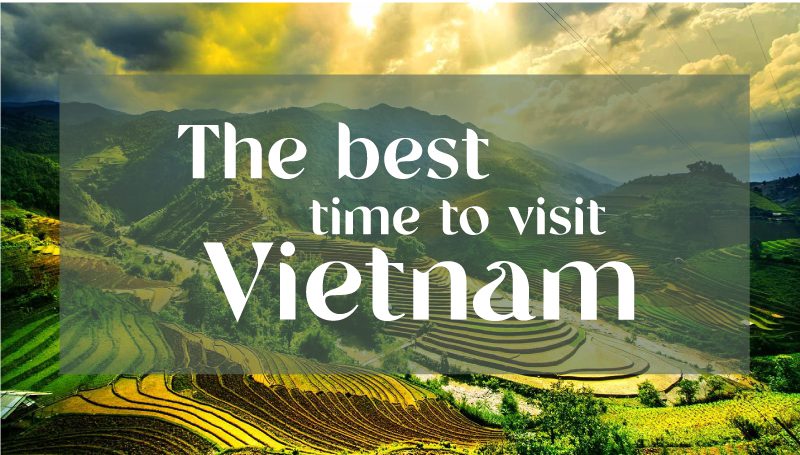
Vietnam is a long, S-shaped country that stretches 1,650 kilometers from north to south. Although Vietnam’s entire territory is subject to a tropical monsoon climate, the country’s weather varies greatly from north to south, from a temperate to a tropical climate. Due to this characteristic, it is a year-round destination. However, spring (March to April) is usually the best time to visit there as the days are generally pleasant, the temperatures are moderate, and the amount of precipitation is minimal. While summer days can become uncomfortable, hot, and sticky due to extreme temperatures. Tropical monsoons cause heavy rains and sporadic flooding during other times of the year.
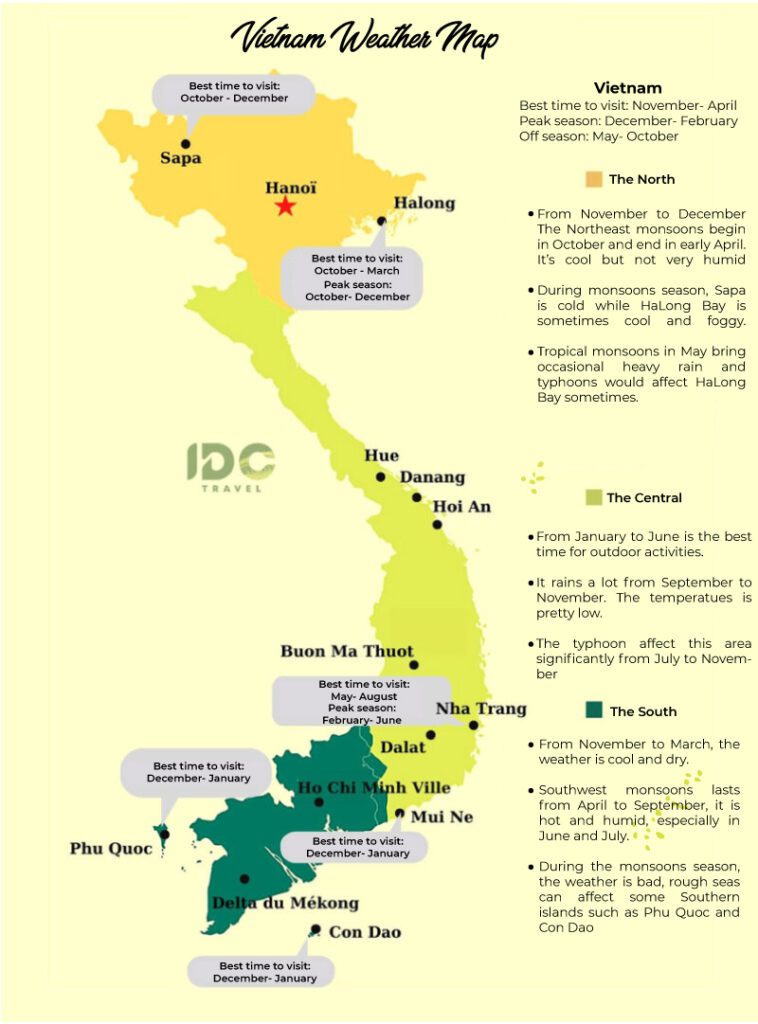
Vietnam weather map
The North
Northern Vietnam enjoys a subtropical climate with four seasons: summer (May–August), autumn (September–November), winter (December–January) and spring (February–April). This is the region of Vietnam that experiences the greatest temperature contrasts.

When to go to the north
The capital, Hanoi, enjoys the calmest weather conditions and is therefore best visited all year round. With the extreme cold of the northeast monsoon, summer temperatures can reach 39°C and winter temperatures can drop to 9°C with the extreme cold of the northeast monsoon. As a rule, Hanoi is hardly exposed to serious floods, earthquakes, typhoons, and other natural disasters. The period from September to November is the best time to visit Hanoi and fully enjoy the most beautiful season of the year. Visiting Hanoi in this period of time, you would enjoy the most romantic season of Hanoi whose beauty appear in many songs.
The landscapes of Halong Bay are impressive, and you can cruise there all year round, except during the typhoon season, from July to August.
Ha Giang and Sapa are located in the mountainous regions of the far northeast, where the winter cold can be freezing and snowy in late December and January. The best time to travel in the mountains of northern Vietnam is during the dry months, from September to April. Not to mention that Sapa in September and Ha Giang in November are the most beautiful with their golden rice terraces and blooming buckwheat flowers.
>>> Discover North Vietnam Tours
The Centre
The climate of central Vietnam is a kind of transition zone between the north and the south. There is a difference between the climates of north-central (north of Hai Van Pass) and south-central (south of Hai Van Pass). The two most typical features of Central Vietnam’s climate are the rainy season and the dry season. It does not occur at the same time as in the rest of the country’s climate (the north and the south).

When to go to the central
In Hoi An, Hue, and Da Nang , the hottest period and driest climate occur from mid-January to August. During this period, the average temperature is around 30 °C and can sometimes reach 40 °C. The rainy season starts from August to December with the heaviest rainfall and a high risk of flooding between October and November. If you plan to visit Hoi An, Hue, or Da Nang, consider avoiding typhoon season.
On the central high plateau, Da Lat experiences wet weather from June to October and a dry and cold season in December and January.
Further south in central Vietnam, the coastal provinces from Nha Trang to Mui Ne experience a longer dry season, which generally runs from January to September. In contrast, summer in the Center-South region experiences higher temperatures. Being less affected by rain, the rainy season only extends from October to early December.
All things considered, you should not visit central Vietnam during the rainy season (August to December). We highly recommend you book a tour in central Vietnam between February and May.
Check out Vietnam Center Tours.
The South
Southern Vietnam is typical of a humid tropical climate that maintains constant temperatures of 25 to 35°C all year round. There are two main seasons: the rainy season and the dry season. From November to the end of April is the dry season. It is warmer and more humid from late February to early April.

When to go to the south
The rainy season runs from June to November, with the heaviest rainfall occurring from June to August. During the rainy season, you will most likely see sudden, heavy downpours in the mid-afternoon in Ho Chi Minh City . In addition, floods are frequent between July and August. Despite of the humid climate, the rainy season is a good time of year to visit southern Vietnam.
The Mekong Delta becomes more attractive and lively when the dry season arrives. Although the best time to enjoy the bustling floating markets is during the dry season, the Mekong Delta in the monsoon season is surprisingly beautiful for photography, as spectacular storm heads float by and the rice paddies are covered in vibrant emerald green.
The islands of Phu Quoc and Con Dao is popular places for scuba diving, snorkeling, surfing, and kitesurfing, will be your best choice if you want to go to the beach in December and January . The rainy season will arrive in these areas from June to October, and most activities will be canceled.
The ideal time of year to visit Vietnam is difficult to determine with precision. Actually, any time of year can be used to visit any location in Vietnam. Due to the varied topography and the distinct climates in the north, south, and center, you can visit Vietnam at any time.


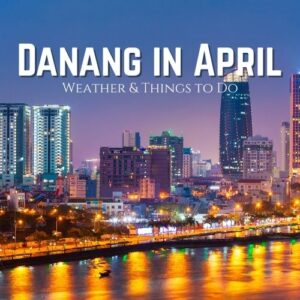
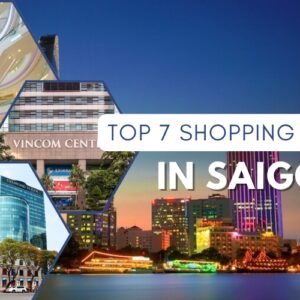
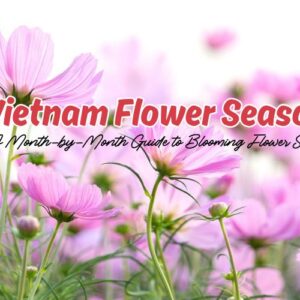
Based on the blog post I just read from IDC Travel, I noticed that each region of Vietnam has its own ideal time to visit. I’m planning my first trip to Vietnam and I’m thinking of going in November — would you recommend prioritizing the North, Central, or South region during that time? Any suggestions would be greatly appreciated!
Hi, thank you for reaching us! November is a great time to visit Vietnam! I’d recommend prioritizing Central Vietnam — places like Da Nang, Hoi An, and Hue usually have pleasant weather as the rainy season winds down. If you enjoy cooler temperatures, Northern Vietnam is also beautiful this time of year. The South begins its dry season too, perfect for beach lovers. Overall, you really can’t go wrong in November — just pick the region that best matches your travel style! If you need further support, don’t hesitate to contact us!
Best regards,
IDC Travel Team.